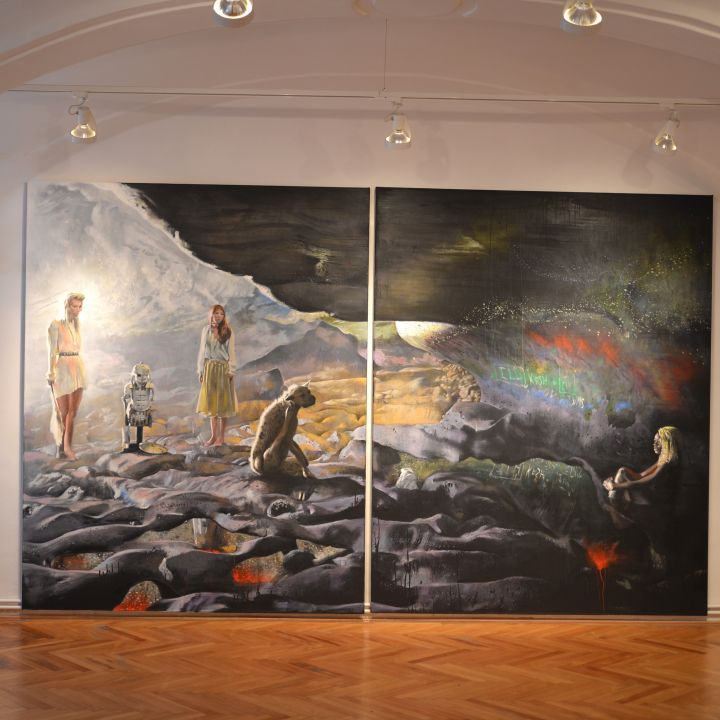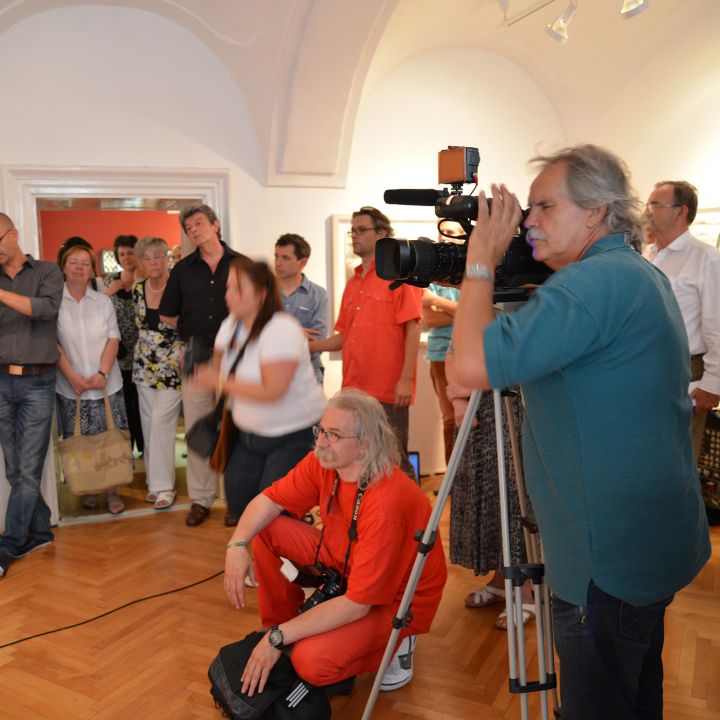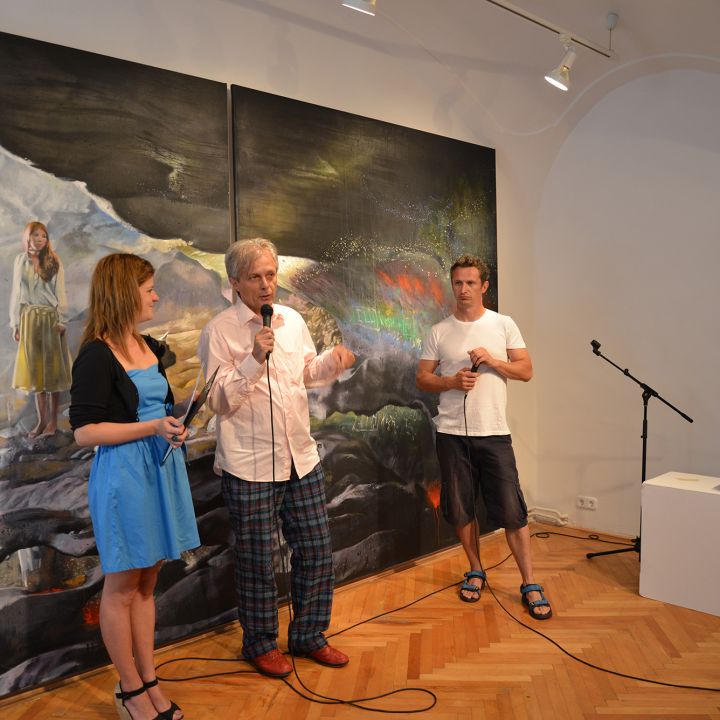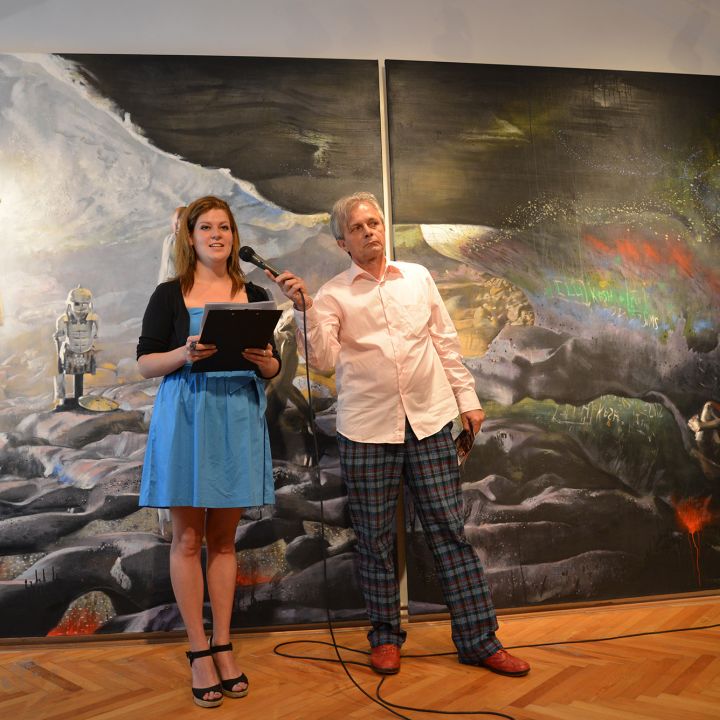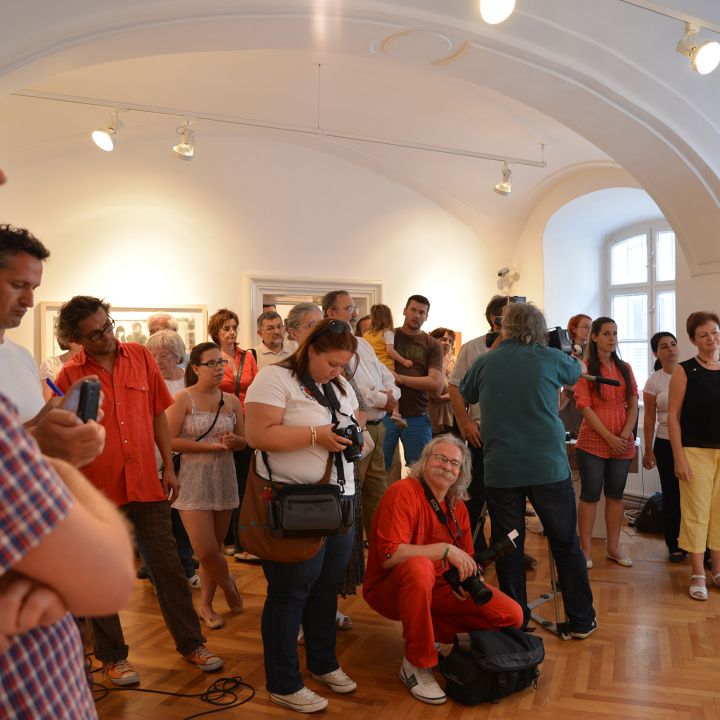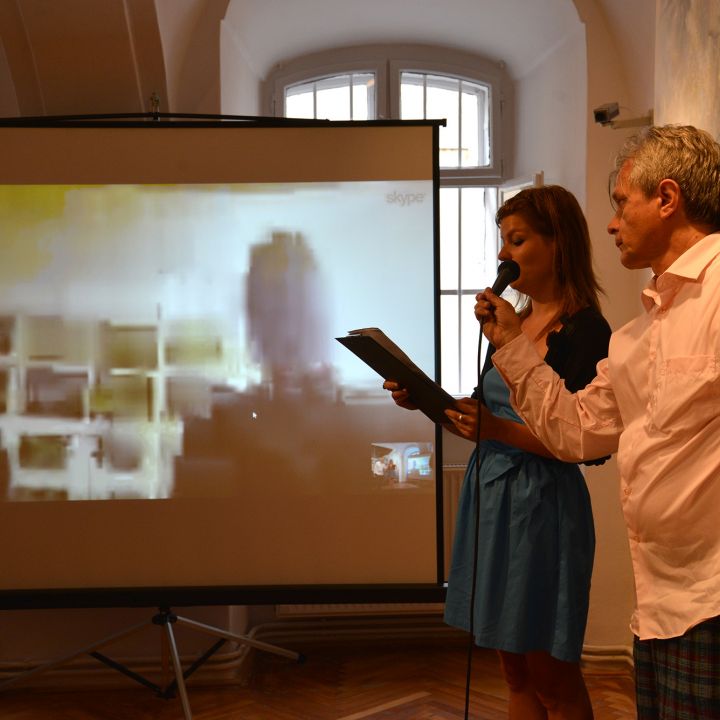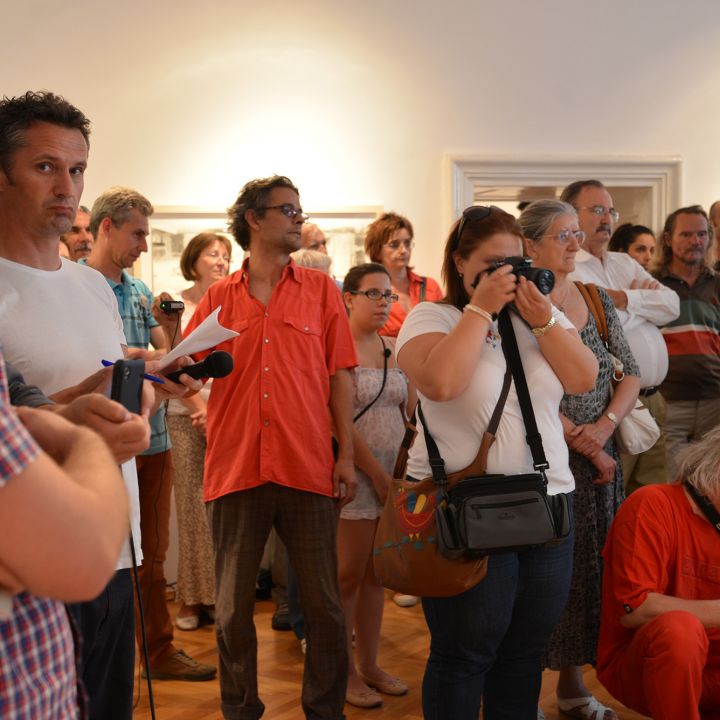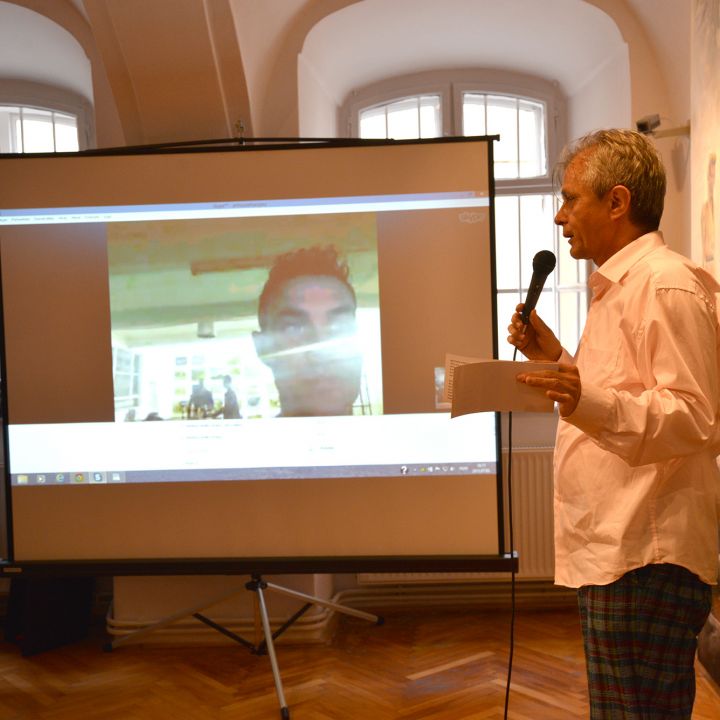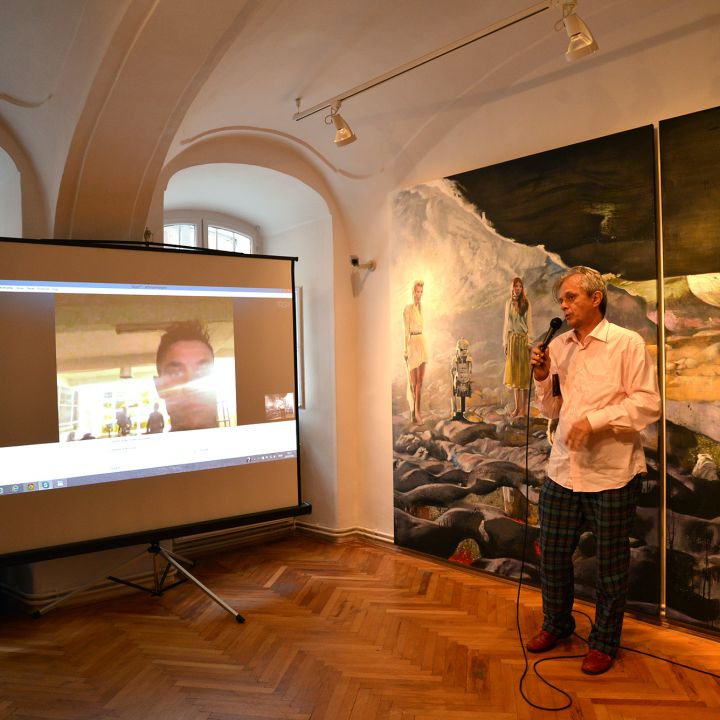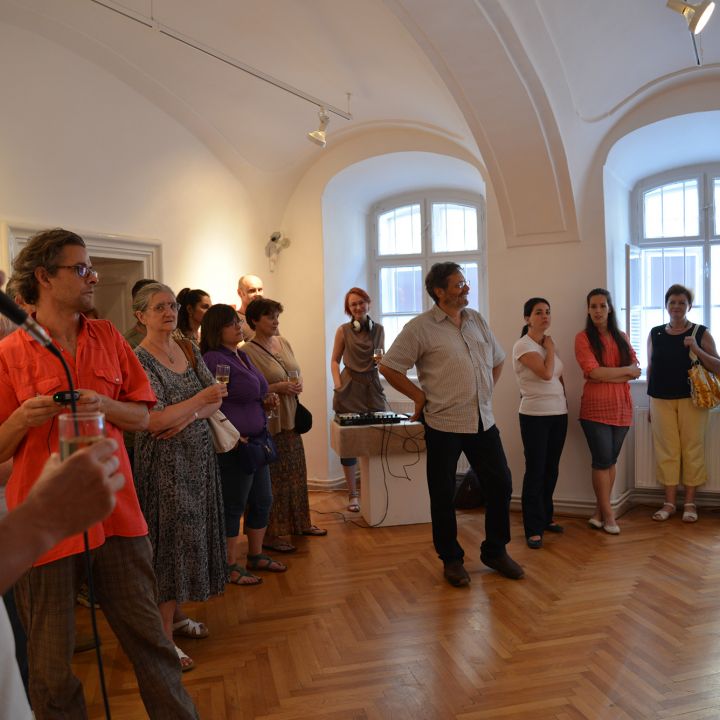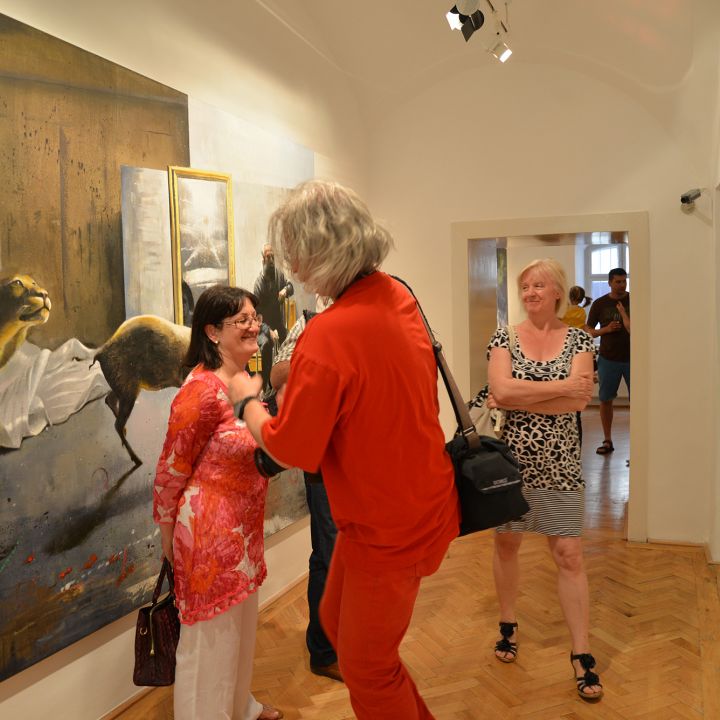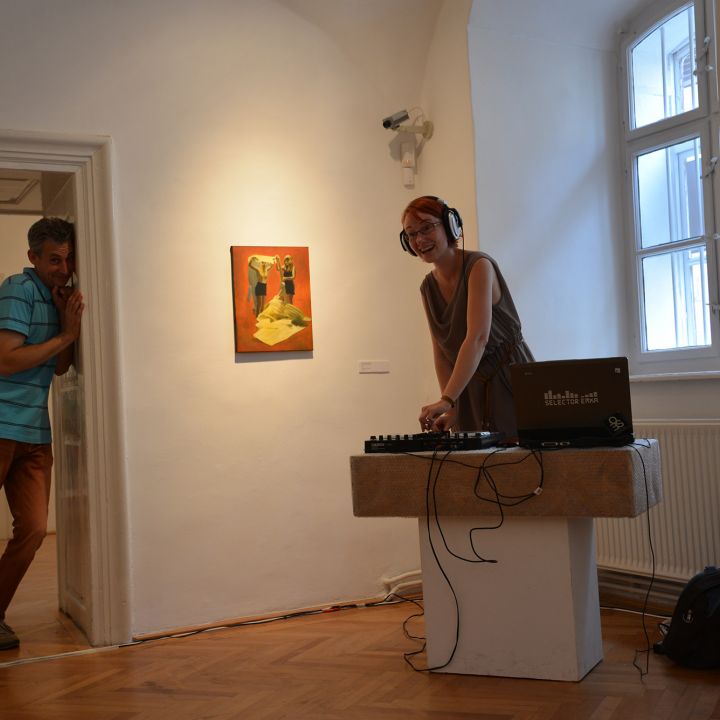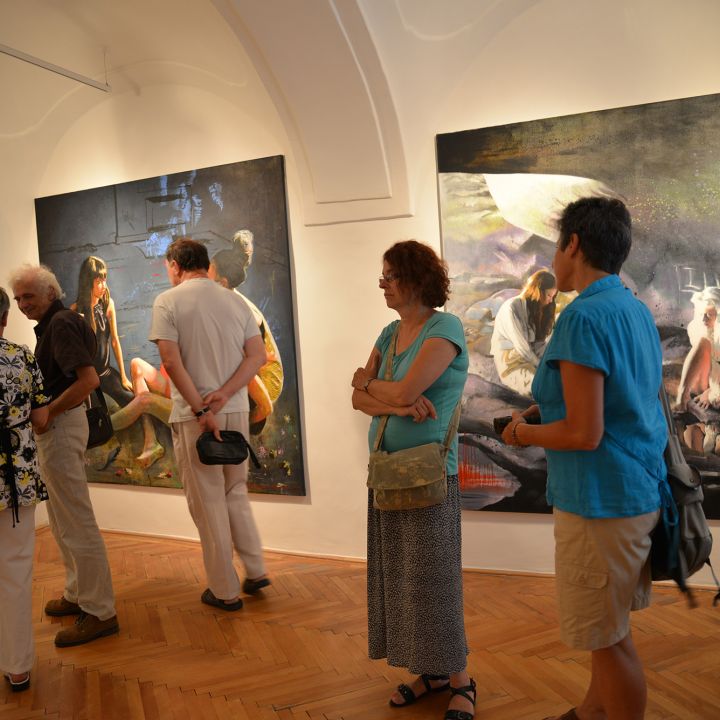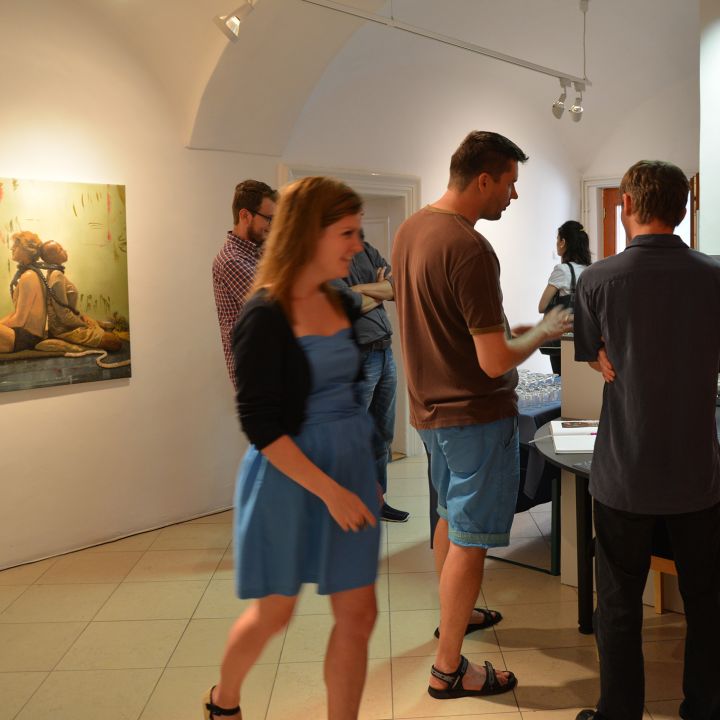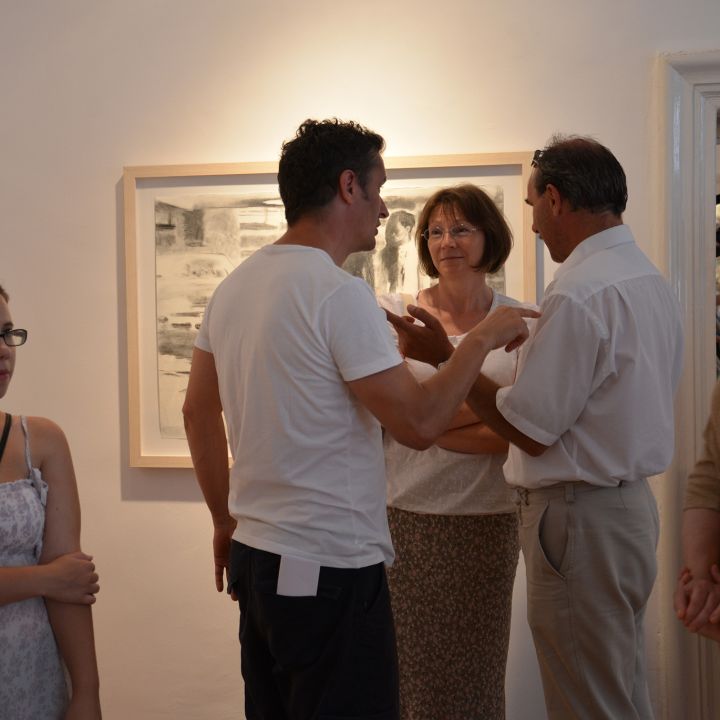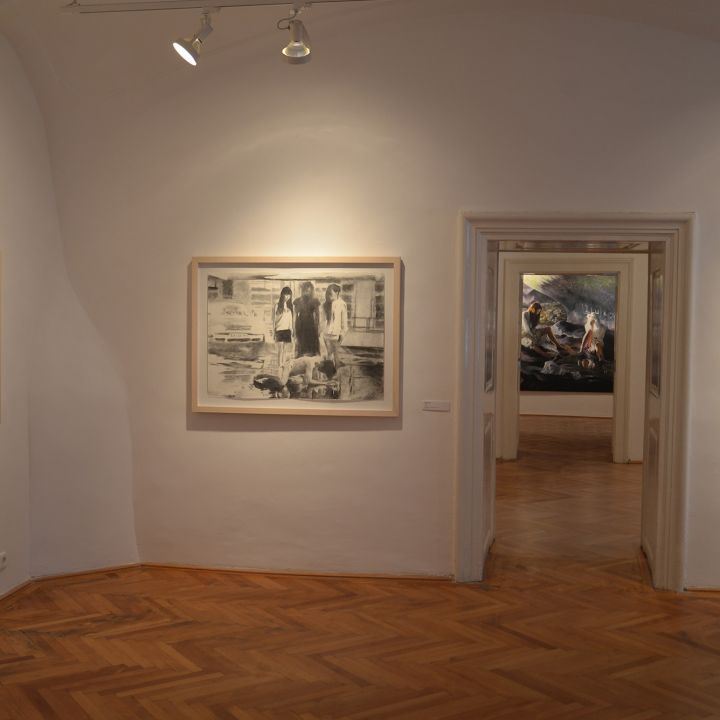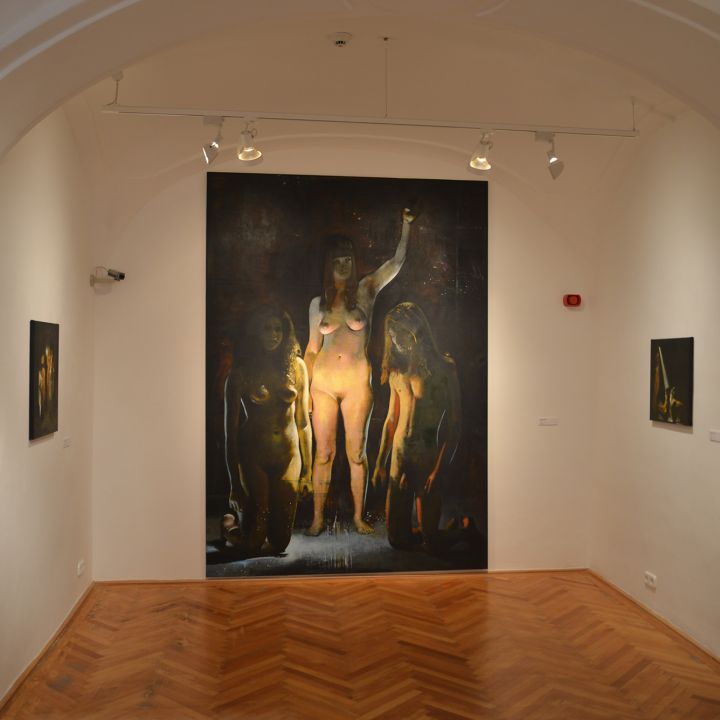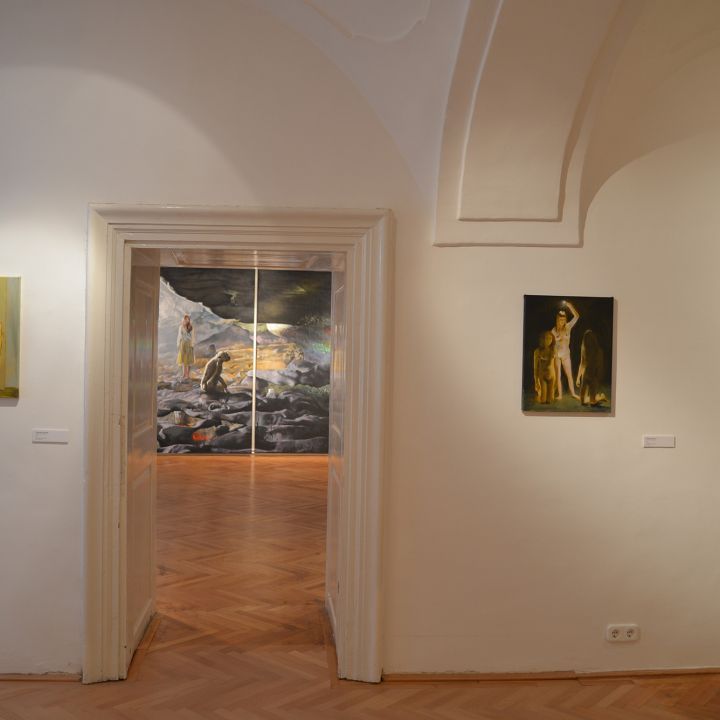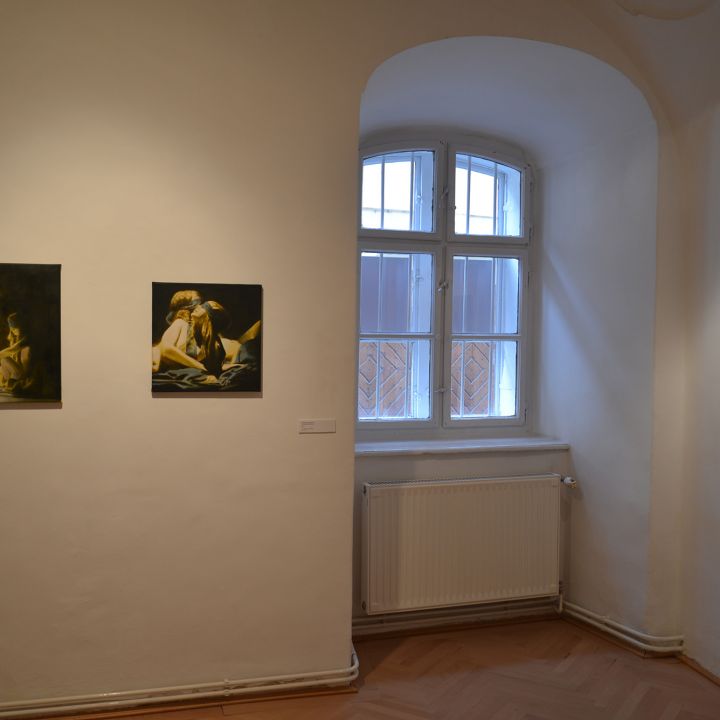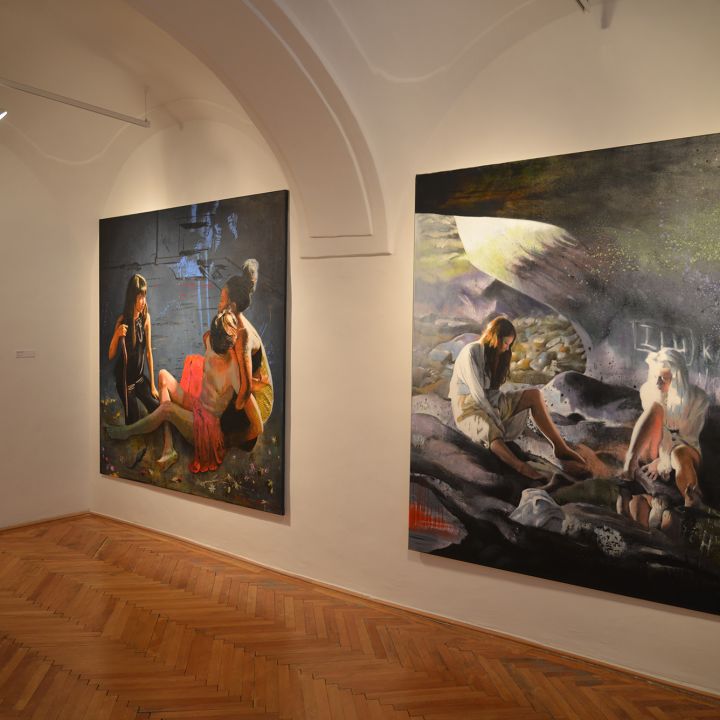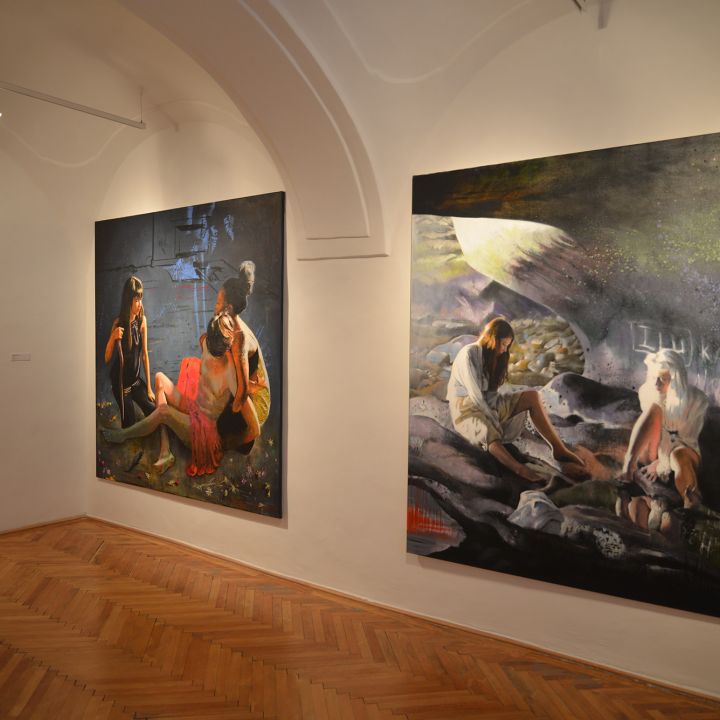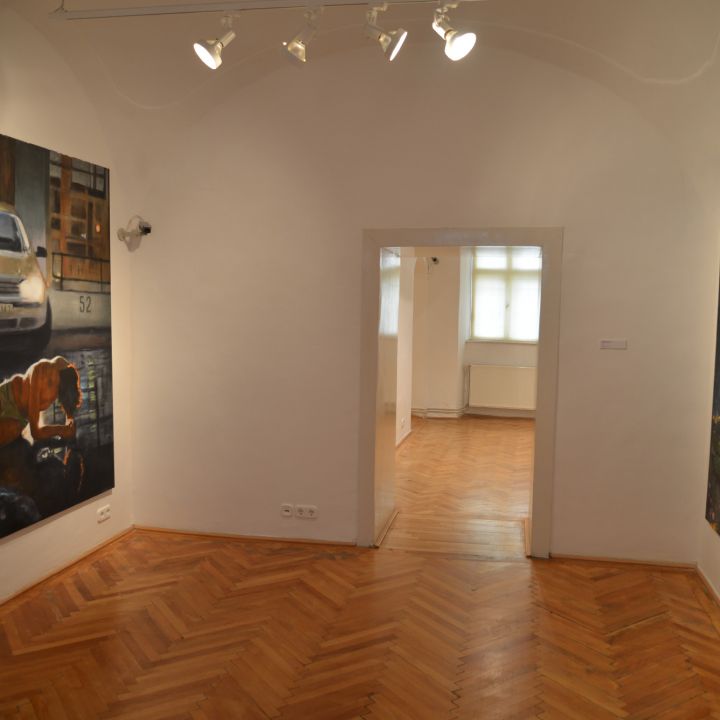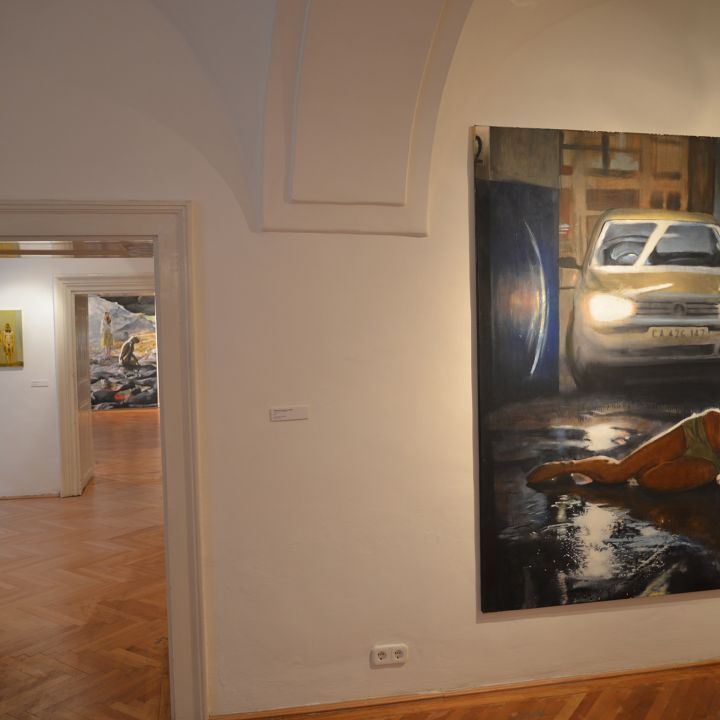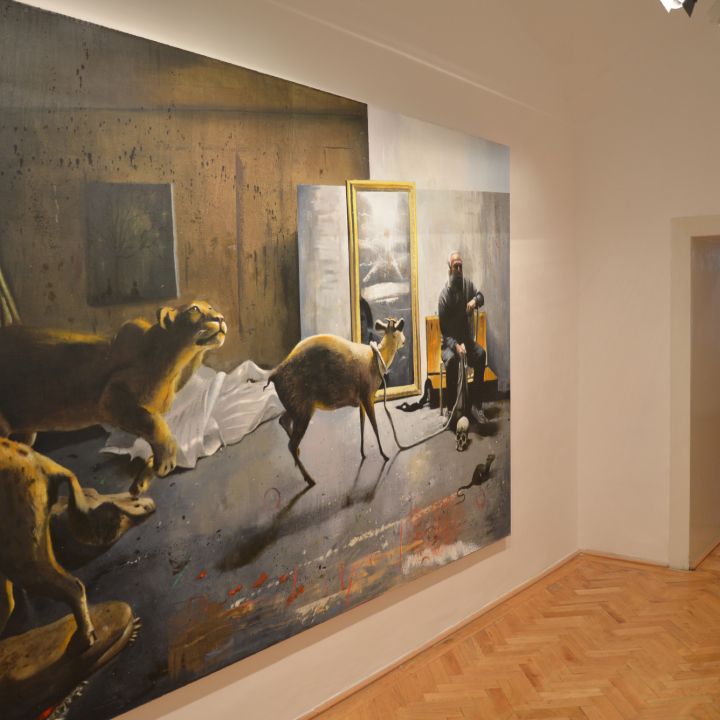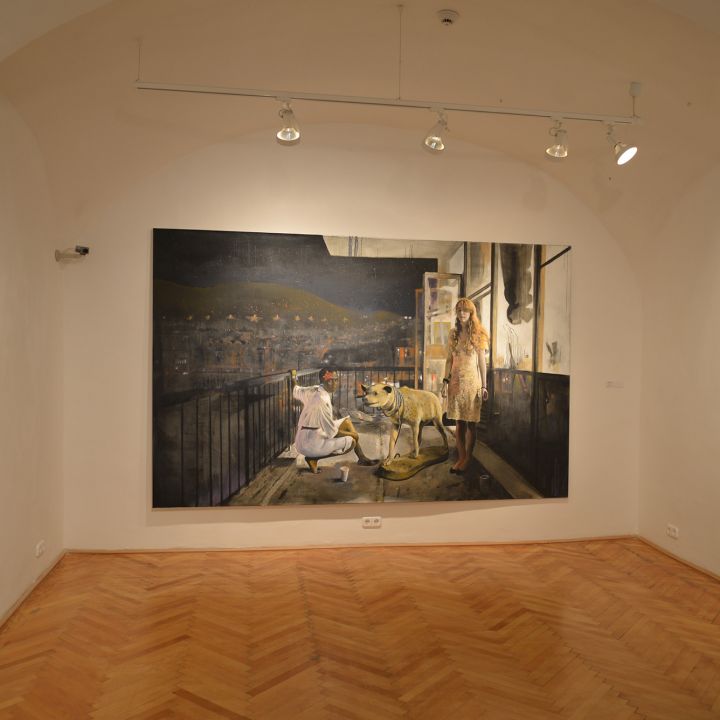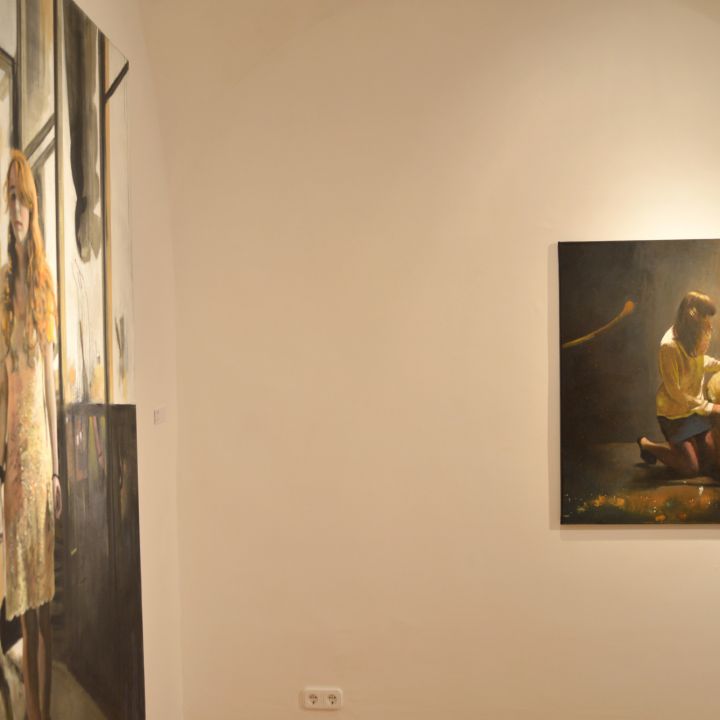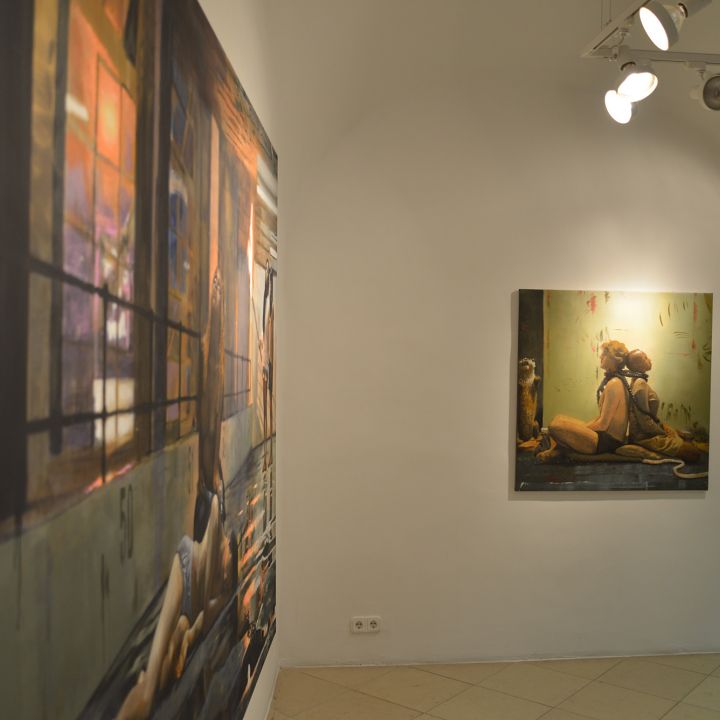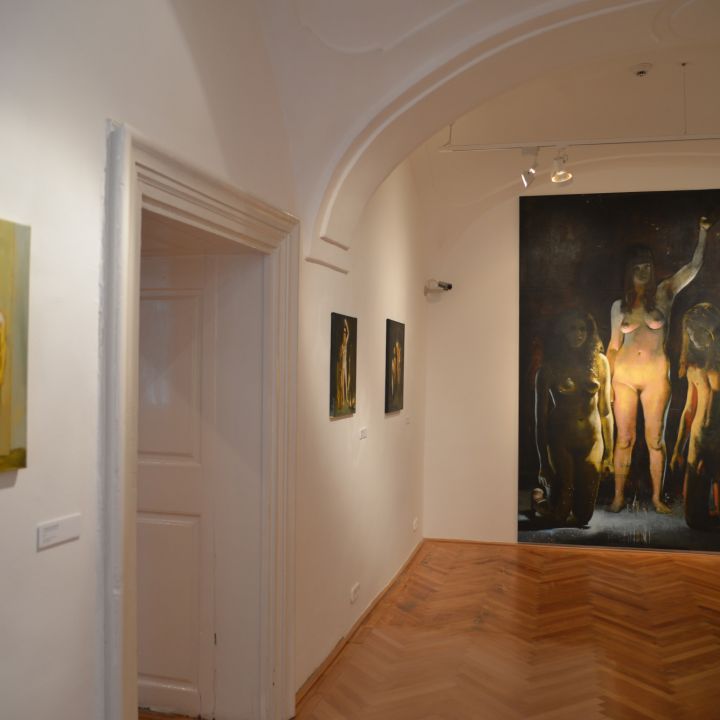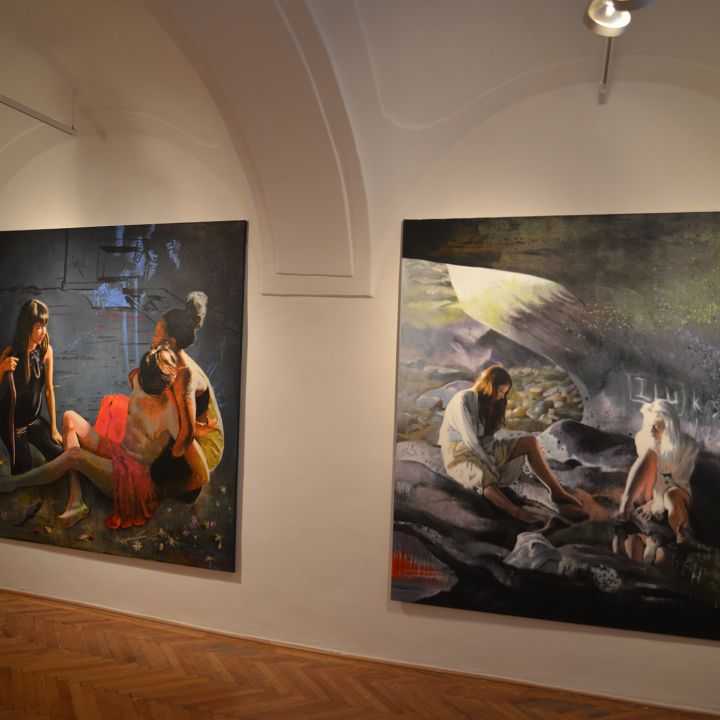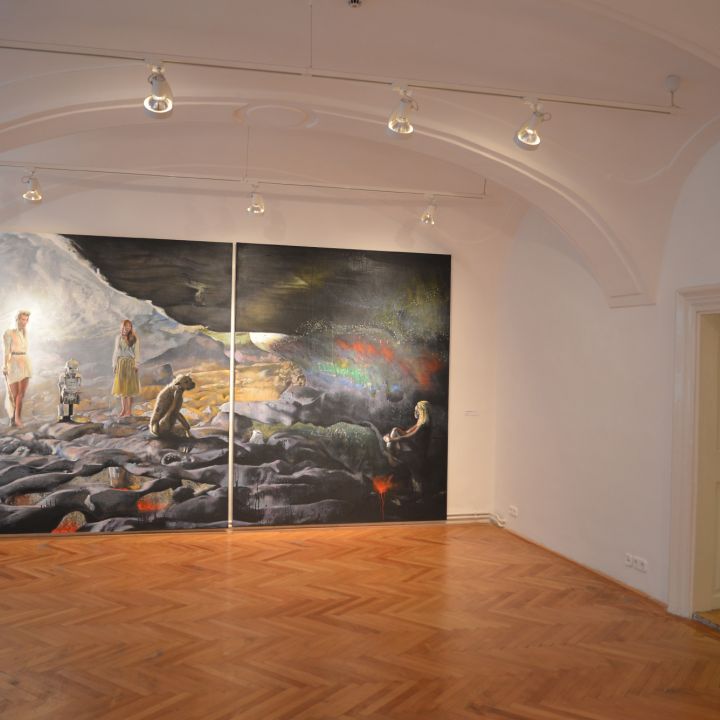Hindley was born in Cape Town, South Africa in 1974. He graduated from the University of Fine Arts, Cape Town in 2002 and lives and works in Cape Town. He travels frequently to Europe. He has shown his work in solo and group exhibitions in several European cities: in Basel, Berlin, Bratislava, Vienna, Amsterdam.
"Complexity-laden emancipation:
Freedom, mythology and allegory in Matthew Hindley's Twilight of the Idols exhibition
Taking the title from Friedrich Nietzsche's book published in 1889, "Twilight of the Idols" shows the viewer the process that has transformed Matthew Hindley's painting over the last three years. During this time Hindley's paintings have created a world of their own. Each new work has become a part of this world; a component of this alternative painted reality. Each piece in the series adds a new area to the geography of this world and, rather paradoxically, reinforces our ignorance of it.
In his earlier works, The Opposite of Memory (2009) and The Hour of Lead (2010) the artist locked his subjects in the hermetically sealed space of the studio. He depicted an isolated existence surrounded by paint-smeared walls, stuffed animals, ropes and polypropylene sheets. True to the title of Hindley's previous exhibition in 2011 - An Everlasting Once - the world of the paintings is a self-contained, confined space; timeless and isolated. The only painting in An Everlasting Once that depicts the world outside the studio, The End of the World (2010) changes everything in this space. From the moment that Hindley's two subjects stepped out onto the balcony representing the end of the world, the studio was no longer the whole of the known world for them, but became an element of a much larger world. Thereafter, Hindley's characters were scattered across a large and unknown universe, where the various consequences carried with them a kind of emancipation fraught with complexity. Hindley's characters are not members of a coherent, defined group. The cast changes constantly, from series to series, but the characters share similar characteristics. Once outside the safe walls of the studio, they cannot find their place in the world. As they reach adulthood, they approach their surroundings with a childlike innocence and wander into a world they cannot understand. This naivety also applies to the stuffed hyena that the two female characters in the Waenhuiskrans series try to conceal. It is both incongruous and pointless that a child's stuffed animal should be used as a lifeless source of comfort and security. This is clearly the interpretation suggested by Dirty and Agency (2012).
The question of the existence of borders also appears in Hindley's paintings: what is included in a scene and what is not? He juxtaposes figurative representations of his characters and their surroundings with splattered and dripped abstract paint splatters that distract the audience from the reality being depicted. In some cases, such as in Healing and Authority (2012), the choice of colour in the abstract overlays contributes to the dramatic mood of the painting. In other works, such as Untitled 1 (Waenhuiskrans series) and Untitled 2 (Waenhuiskrans series) (2011), the interventions of paint subvert the internal logic of the work. Here, the black and red splashes of colour appear as standing droplets - stalagmites - and their flow is in opposition to the assumed direction of the gravitational force of the scene.
For the most part Hindley's paintings depict abstract scenes with only Waenhuiskrans' works containing numerous references to reality. The Waenhuiskrans caves are historically significant in the context of South Africa, as it was there that the Boers once hid their cattle and wagons, which represented their wealth. In addition, the name of the bay where the caves are located comes from the ship Arniston, which ran aground in 1815. Only a few survivors managed to swim ashore. It is possible that for them, as for Hindley's protagonists, the caves were a safe haven. In a similar vein, local mythology has a legend that Bientang, the last of the Strandloper (a South African ethnic group) lived and died in a cave in Hermanus, up the coast from the nearby beach. After all, the corners of the caves evoke the protective atmosphere of some shrines.
In One Pearl of Great Price (2012) and The Paradox of Confession (2012) the male protagonist was not so lucky. In this series it becomes clear that the naivety of the figures depicted in the studio is not typical of those used to the outside world. Presumably in a covered parking lot the man was attacked by three sinister female figures, thus evoking the mythological motif of the three women: the three ancient Greek goddesses of fate (often referred to as the Three Moirs), the Norwegian Nornas - goddesses of doom - or the three witches of Shakespeare's Macbeth. This motif helps to heighten the art historical significance of Hindley's work, as he wages a historical battle with these three misguided goddesses who control fate. 'Evil is good and good is evil' is the declaration of the three witches in the opening scene of Macbeth, suggesting that appearances can be deceptive.
These works refer to an oral history story of the rape of a number of male hitchhikers in Zimbabwe by an aggressive group of women. After forcing their victims to have sexual intercourse against their will (rape of men by women is not a crime under Zimbabwean law) the contents of the condom were presumably used in some kind of juju (witchcraft) ritual. Thus, the maternal tenderness of Hindley's central female figure in One Pearl of Great Price evokes Michelangelo's Pieta, but also reveals a sinister ulterior motive. Faith is shaken in these idols, the false faith that serves as an excuse for insidious deeds. The combination of the scenes in the caves of Waenhuiskrans and in the car park evokes the sense of freedom that Nietzsche alluded to in Twilight of the Idols: "For what is freedom?! How can we take responsibility for ourselves? How can we keep our distance from one another, so that we become increasingly indifferent to difficulties, obstacles, misery and even life? "The individual on the path of freedom is necessarily and constantly confronted with difficulties and struggles. These obstacles must be overcome and only the individual with the willpower to do so can do so. It was in this sense that Nietzsche referred to the constantly misquoted aphorism: "From the war school of life: That which does not kill you makes you stronger."
In The Twilight of the Idols, Nietzsche stated that in his concept of freedom "The value of a thing is sometimes not what it is worth, but what it is paid for or what it costs us." It is likely that Hindley is referring to this when he titles his painting One Pearl of Great Price. Leaving the studio the subjects faced adversity and overwhelming experiences and by overcoming them became fully-fledged individuals. Importantly it is a process that is constantly repeated. While in the compositional scene of The Paradox of Confession Hindley's protagonist struggles to recover from the adversity of the desolate scene of the abandoned car park, some signs point beyond the scene to a larger feud. It is in the scenes in the Waenhuiskrans caves and in the car park that the concept of freedom in Hindley's imagination is fulfilled. In the parking lot sequence a form of freedom dominated by Dionysian chaos and a kind of disorder is depicted. In the Waenhuiskrans series the artist illustrates a form of existence defined by Apollonian order and structure, a temporary sanctuary.
The latest work in the exhibition, Twilight (2013) strikes a balance between the two extremes. In a sense Twilight is a conclusion: three individuals are seen in a completely dark space, perhaps in space. Stripped of any distinctive environment, stripped of their clothing and any support. The characters themselves have been simplified by the artist to their basic humanity. The torch is a very important element as the only source of light in the scene. Light is a pervasive symbol in this series, from the city lights in The End of the World, which suggest the presence of a populated settlement in the distance to the burning torch in One Pearl of Great Price. Light streams into the Waenshuikrans caves from outside and in this final work is condensed into a single beam that shines through the luminaire. "Let there be light!" said God in Genesis 1 (1-3), in the middle of nowhere. In this sense these figures have become godlike. After Adam and Eve ate of the fruit of the tree of knowledge, they became aware of their nakedness and were therefore banished from the Garden of Eden. Instead, Hindley's characters in the Twilight painting found themselves at the turning point of creation in a space between order and chaos. The freedom and knowledge gained at the cost of innocence becomes a symbolic tale. It must be stressed that this is not a universal narrative or an eternal truth. In the context of Hindley's exhibition of paintings, the explanation created by his paintings is more than Craig Owen's notion of allegory: "For in the structure of allegory one text is interpreted through another, however fragmentary, incoherent or chaotic their relationship to each other." And so it may be that Nietzsche's philosophy with its biblical allusions and mythological motifs is intertwined with history, contemporary events and folklore through the artist's own South African context. This palimpsest (further extending Owen's notion of allegory) is then embodied in the autonomous world created by Hindley's brush. Fragmented, blurred, constantly oscillating between chaos and order Hindley's creatures slowly become accustomed to seeing in the twilight of the idols."
Text by Tim Leibbrandt
Works cited: - Nietzsche, F. 1889. 'Twilight of the Idols'. in Kaufmann, W(ed.). 1976. New York: Penguin Books.
- Owens, C. 1980. in 'The Allegorical Impulse: Toward a Theory of Postmodernism', October 69.

